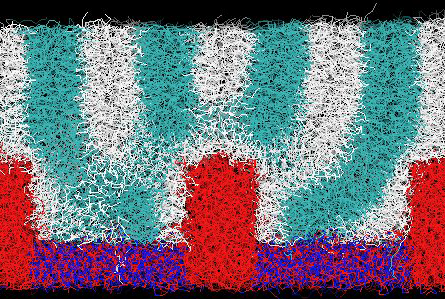event
Nano@Tech - Directed Self-Assembly of Block Copolymers: Opportunities and Challenges on the Path to Scalable Nanomanufacturing
Primary tabs
Directed Self-Assembly of Block Copolymers: Opportunities and Challenges on the Path to Scalable Nanomanufacturing
Professor Clifford L. Henderson
School of Chemical & Biomolecular Engineering, Georgia Institute of Technology
School of Chemistry and Biochemistry, Georgia Institute of Technology
Abstract:Underlying much of what we envision as nanomanufacturing for functional devices is the ability to form nanoscale two dimensional and three dimensional structures in various organic and inorganic materials. For example, all modern electronic devices (e.g. computers, cell phones, tablets, etc.) rely on the use of microprocessors and memory devices that possess integrated circuit (IC) device features smaller than 50 nm in size. The critical and enabling technologies for mass producing such microelectronic devices are the combination of lithographic materials, processes, and tools used to pattern these nanoscale device elements. However, continuing to scale down these feature size faces a number of challenges in terms of the materials, tools, and economics of such micro- and nanofabrication technologies. Solutions to these problems will require new materials and new material processing approaches. The first part of this talk will quickly review the current state of the art in such lithographic nanopatterning technologies and some of the current challenges being faced by traditional lithography and IC manufacturing methods. The second part of the talk will look at the role self-assembly may play in the future of nanomanufacturing through the use of block copolymer directed self-assembly techniques (BCP DSA). Block copolymers have the natural tendency to micro-phase separate at length scales commensurate with the polymer chain dimensions, i.e. on the order of 1 to 100 nm in size. When allowed to micro-phase separate in the bulk or on homogeneous surfaces, such block copolymers form nanostructured but disordered morphologies. However, when combined with appropriate template surfaces patterned with traditional lithography techniques, nanometer length scale features with the long range order required for nanomanufacturing can be achieved. This talk will highlight the synergy of combining experimental and molecular modeling approaches to attack such problems and will discuss current achievements and remaining challenges in the field of BCP DSA.
Biography: Dr. Clifford L. Henderson is currently a Professor in the School of Chemical &; Biomolecular Engineering at Georgia Tech, as well as an Adjunct Professor in the School of Chemistry and Biochemistry and the School of Materials Science and Engineering. Professor Henderson recently concluded serving as the Functional Materials Program Director in the CMMI Division at the National Science Foundation for 2013-2014. He received his B.S. in Chemical Engineering with Highest Honors from Georgia Tech and his M.S. and Ph.D. in Chemical Engineering from The University of Texas at Austin. He has received numerous awards for his work including an NSF CAREER Award, the inaugural Intel/STC Outstanding Lithography Researcher Award in 2012, and was named a SPIE Fellow in 2010.
Groups
Status
- Workflow status: Published
- Created by: Christa Ernst
- Created: 10/31/2014
- Modified By: Fletcher Moore
- Modified: 04/13/2017
Categories
Keywords
Target Audience


